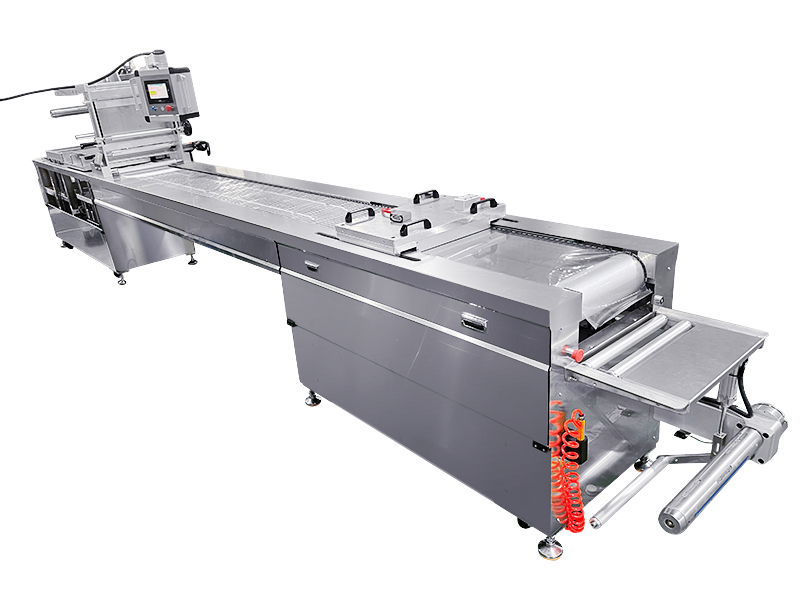Release Date:2024-08-06 14:45:43 Popularity:
With the rapid development of the global manufacturing industry, standardized equipment can no longer meet the increasingly complex and personalized needs of all walks of life. Therefore, the development of non-standard automation equipment has come into being. It helps companies achieve unique production goals, improve efficiency, reduce costs, and enhance market competitiveness by providing highly customized solutions. This article will explore the importance, development process, application areas and future development trends of non-standard automation equipment development.

I. The importance of non-standard automation equipment development
1. Meet personalized needs: The production processes and needs of each company are different, and standardized equipment often cannot be fully matched. Non-standard automation equipment can be designed and adjusted according to specific needs to ensure seamless connection between equipment and production processes.
2. Improve production efficiency: Customized equipment can optimize specific production links, reduce manual operations, and improve the degree of automation, thereby greatly improving production efficiency.
3. Enhance competitiveness: Companies can achieve unique production advantages such as higher precision, faster speed or lower cost through non-standard automation equipment, and can stand out in market competition.
4. Reduce costs: Although the initial investment of non-standard equipment is high, by improving production efficiency and reducing labor costs, the total cost can be significantly reduced in the long run.
2. Development process of non-standard automation equipment
1. Demand analysis: The first step of development is to deeply understand the customer's production needs, existing processes and problems. Through detailed communication with customers, determine the functions and goals that the equipment needs to achieve.
2. Scheme design: According to the demand analysis, design a preliminary scheme, including the overall structure, working principle, operation process and technical parameters of the equipment. This stage usually requires repeated discussions with customers to modify and optimize the design scheme.
3. Detailed design: After the scheme is determined, detailed design is carried out, including mechanical design, electrical design and software design. Detailed design needs to consider various aspects such as equipment accuracy, stability, safety and ease of operation.
4. Manufacturing and assembly: Manufacture and assemble the equipment according to the design drawings and technical requirements. This process includes parts processing, welding, assembly and preliminary debugging to ensure that the equipment is made according to the design requirements.
5. Debugging and testing: After manufacturing, the equipment is fully debugged and tested to ensure that the performance indicators of the equipment meet the design requirements. The test content includes running speed, accuracy, stability and safety.
6. Customer acceptance: After the equipment is debugged at the manufacturer, it is transported to the customer site for installation and final debugging. The customer inspects the equipment and confirms that the equipment meets production requirements.
7. Training and after-sales service: Train customer operators to ensure that they can operate and maintain the equipment correctly. At the same time, provide after-sales service, including equipment maintenance, maintenance and troubleshooting, to ensure long-term stable operation of the equipment.

3. Application areas of non-standard automation equipment
1. Automobile manufacturing: The automobile manufacturing process is complex and requires high precision. Non-standard automation equipment can be used in welding, assembly, spraying and other links to improve production efficiency and product quality.
2. Electronics industry: Electronic products are updated quickly and the production process is complex. Non-standard automation equipment plays an important role in the assembly, testing and packaging of electronic components.
3. Pharmaceutical industry: The pharmaceutical industry has extremely high requirements for the hygiene and precision of production equipment. Non-standard automation equipment can be used in drug production, packaging and testing to ensure product quality and safety.
4. Food processing: The food processing process requires efficient and safe production equipment. Non-standard automation equipment provides customized solutions in food production, packaging and testing.
5. Logistics industry: Logistics automation equipment can be used for warehousing, sorting and transportation to improve logistics efficiency and accuracy. Non-standard equipment can be customized according to specific logistics needs to adapt to different business models.
4. Development trend of non-standard automation equipment
1. Intelligence: With the development of artificial intelligence and Internet of Things technology, non-standard automation equipment will develop in the direction of intelligence. Intelligent equipment can achieve self-monitoring, self-adjustment and self-maintenance, improving production efficiency and equipment reliability.
2. Modularity: Modular design makes non-standard equipment more flexible and easy to upgrade and maintain. Through modular design, equipment can be quickly adjusted and expanded according to needs to adapt to different production tasks.
3. Green and environmental protection: Future non-standard automation equipment will pay more attention to energy conservation and environmental protection. By adopting green materials and energy-saving technologies, the energy consumption and environmental impact of equipment can be reduced to promote sustainable development.
4. Globalization: With the acceleration of the integration of global manufacturing, non-standard automation equipment will be oriented to the global market. Equipment manufacturers need to understand the production needs and standards of different regions and provide customized solutions to meet the needs of global customers.

In summary, the development of non-standard automation equipment plays an important role in modern manufacturing. By providing customized and efficient solutions, non-standard automation equipment helps enterprises improve production efficiency, reduce costs and enhance competitiveness. In the future, with the continuous advancement of technology and changes in market demand, non-standard automation equipment will develop in the direction of intelligence, modularization, green environmental protection and globalization, providing better services for all walks of life.